Results
-
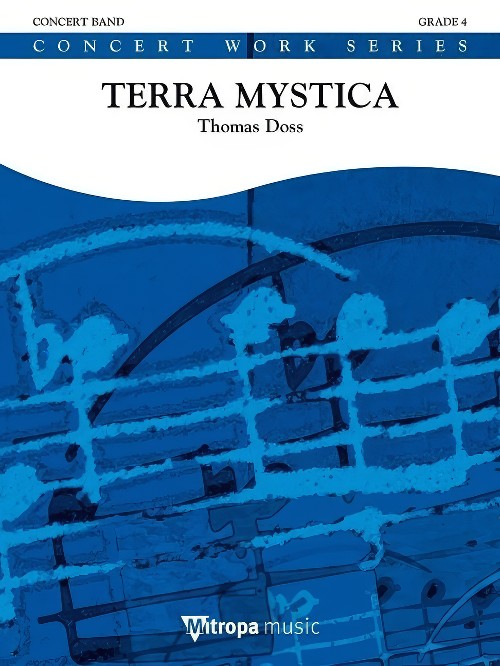 £159.99
£159.99Terra Mystica (Concert Band - Score and Parts) - Doss, Thomas
Terra Mystica is a concert work describing the beautiful area of Hausruck in upper Austria. The three segments (Pastorale, Cathedral and Homeland) each depict different aspects with very different musical characters.Duration: 13:45
Estimated dispatch 7-14 working days
-
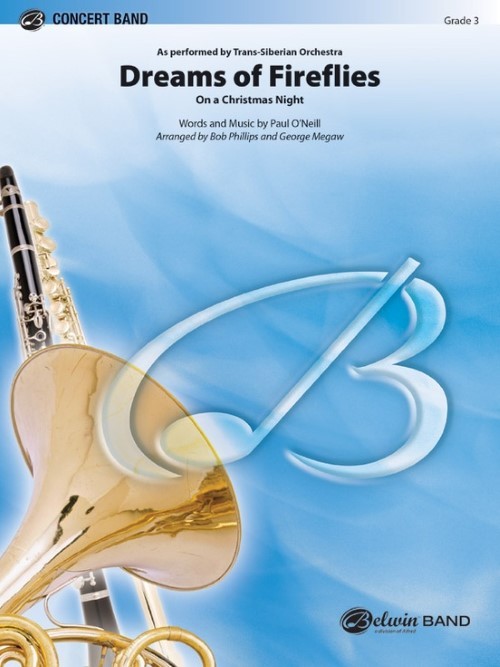 £70.50
£70.50Dreams of Fireflies (On a Christmas Night) (Concert Band - Score and Parts) - O'Neill, Paul - Megaw & Phillips
"For the night is God's cathedral" and the stars visit in "dreams of fireflies." Let this arrangement from the Trans-Siberian Orchestra repertoire add a bit of holiday spice to your winter concert. This piece can be more authentically performed by adding the optional electric violin and electric guitar but can be played by concert band alone. Driving and energetic, just as you'd expect!Duration: 2:30
Estimated dispatch 7-14 working days
-
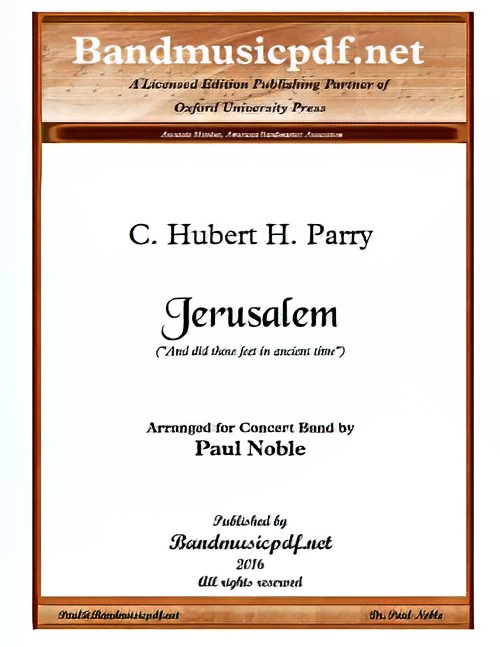 £75.00
£75.00Jerusalem (Concert Band - Score and Parts) - Parry, Hubert C. - Noble, Paul
Possibly the most English of all hymns, Jerusalem, with words by William Blake and Music written by Sir Charles Hubert Hastings Parry, by many is considered to be the unofficial anthem of England. Interestingly, by some within the Church, Jerusalem they say is in fact not a hymn due to it not being a prayer or praising God. As such it has been removed from hymn lists, most notably at Southwark Cathedral.
Estimated dispatch 7-14 working days
-
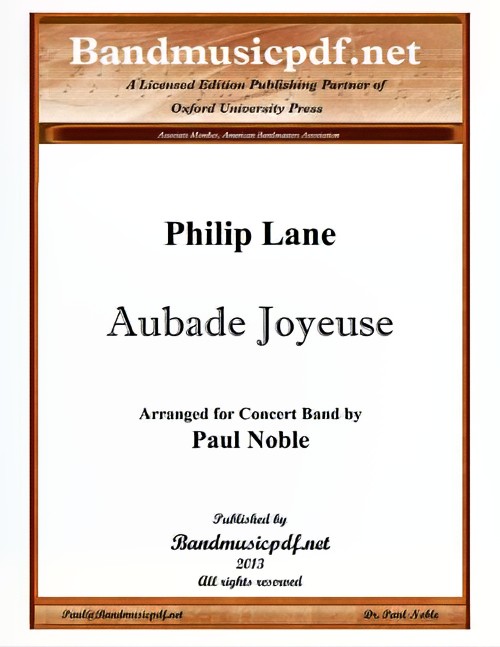 £110.00
£110.00Aubade Joyeuse (Concert Band - Score and Parts) - Lane, Philip - Noble, Paul
Aubade Joyeuse was originally scored for brass band and commissioned by the Three Choirs Festival in 1986 for performance in Gloucester Cathedral. It is in the form of an introduction and allegro and aims to give the impression of a quiet early morning that soon gets a lot busier with people, traffic and general activity rising towards the end to a frenzied fugato climax. This Wind Band arrangement is taken from a setting for orchestra by the composer.
Estimated dispatch 7-14 working days
-
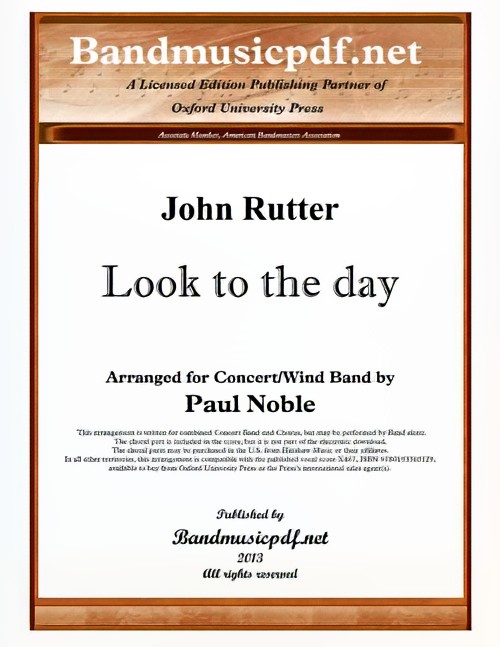 £75.00
£75.00Look to the Day (Concert Band with Optional Choir - Score and Parts) - Rutter, John - Noble, Paul
Written at the invitation of Cancer Research UK for their Service of Thanksgiving in Ely Cathedral, 23rd September 2007. This arrangement is written for combined Concert Band and Chorus, but may be performed by Concert Band alone. The choral part is included in the score, but it is not included in the set. This arrangement is compatible with the published vocal score available seperately. This is another of John Rutter's gorgeous melodies and a deeply moving piece. When performed with Chorus, the words will certainly make a profound statement.
Estimated dispatch 7-14 working days
-
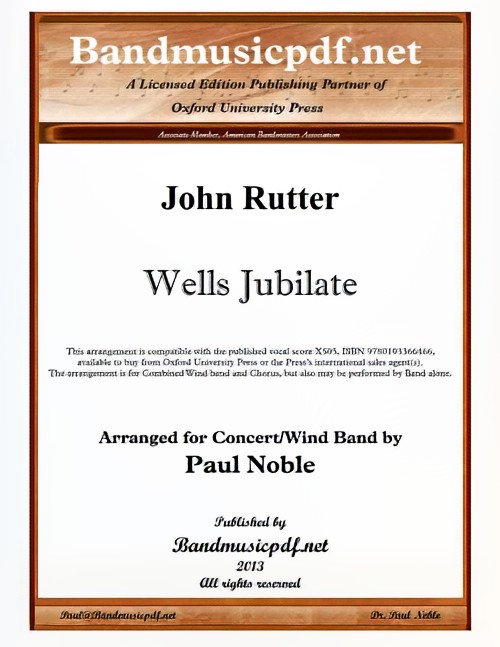 £75.00
£75.00Wells Jubilate (Concert Band with Optional Choir - Score and Parts) - Rutter, John - Noble, Paul
This rousing Jubilate was written in 2009 for Matthew Owens and the choirs of Wells Cathedral as a companion piece to the composer's Winchester Te Deum. With its strong melody and rich textures and harmonies, this work will prove immensely popular with all lovers of Rutter's music. The arrangement is written for combined Concert Band and Chorus, but may be performed by Concert Band alone. The choral part is included in the score, but is not included in the set. The arrangement is compatible with the published vocal score available seperately. Bands may enjoy performing this antiphonally, placing the brass apart from the rest of the ensemble.
Estimated dispatch 7-14 working days
-
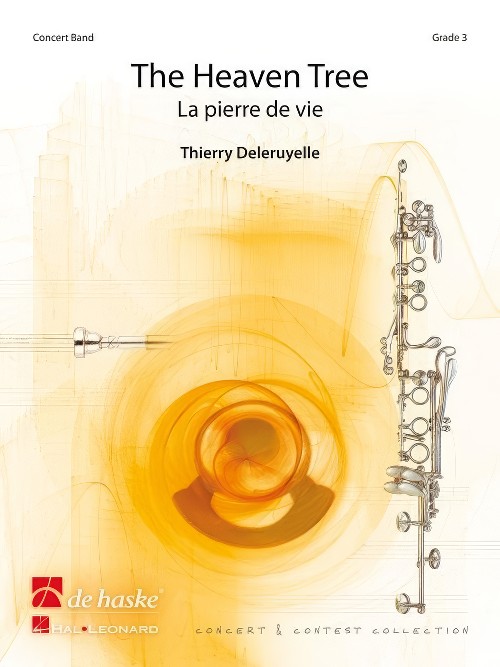 £139.99
£139.99The Heaven Tree (Concert Band - Score and Parts) - Deleruyelle, Thierry
The Heaven Tree is based on the first book in an intensely imagined trilogy by author Edith Pargeter. Set during the golden age of cathedral building, this adventure novel explores the splendour and cruelty of the Middle Ages. Thierry Deleruyelle's work is an ideal accompaniment to the novel. With an obvious sense of suspense, his music helps us get in touch with a distant reality that brings the past to life.Duration: 8:15
Estimated dispatch 7-14 working days
-
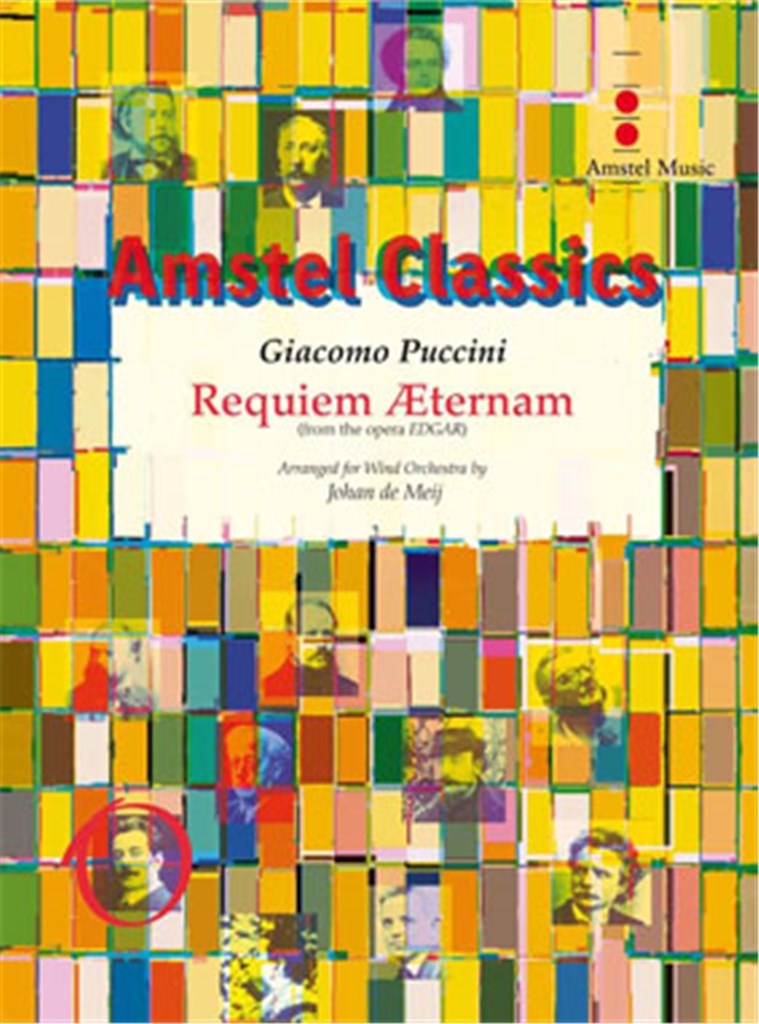 £68.00
£68.00Requiem Aeternam (from Edgar) (Concert Band - Score and Parts) - Puccini, Giacomo - De Meij, Johan
Giacomo Puccini was commissioned to write a second opera after the resounding success of his first, Le Villi. However, the original four-act, grand opera Edgar, to a libretto by Ferdinando Fontana, received a rather lukewarm reception at its premiere in La Scala in Milan in 1889. Initially, the work was only performed three times. Of all the planned performances in the subsequent two years, only one took place, in Lucca, Puccini's birthplace. There, the work was well received. Nevertheless, the composer decided to make drastic changes to Edgar the most radical being the reduction of the opera to three acts, as well as altering a few arias, characters and instrumental parts. In its revised form, the work was even less popular than before. The discarded fourth act later provided material for Tosca (the duet Amoro sol' per te), but Puccini never felt the need to defend Edgar as he did other less fortunate operas, such as La Rondine and Suor Angelica. On a piano excerpt for his female friend Sybil Seligman he even corrupted the title to 'E Dio ti Guarda da quest' opera' (may God preserve you from this opera). This did not prevent Arturo Toscanini performing the Requiem from the third act at Puccini's funeral in Milan Cathedral on 3 December 1924. The Requiem in the third act is being played when the long funeral procession carries the alleged body of Edgar, the confused young man hesitating between the love of the virtuous Fidelia and the exotic Tigrana. The mass hails Edgar as a hero, but a monk claims that he has betrayed his country for a few gold pieces. When the soldiers try to desecrate the body, they discover that the armor contains none. The monk reveals himself as Edgar. He wants to leave with his faithful Fidelia, but the vengeful Tigrana stabs him and kills Fidelia. Edgar grieves over the lifeless body of his beloved, while Tigrana is arrested and the people submerge into prayer. Duration: 3.30
Estimated dispatch 7-14 working days
-
 £69.99
£69.99Prince of Denmark's March (Concert Band - Score and Parts) - Clarke, Jeremiah - Sparke, Philip
Jeremiah Clarke (c. 1674-1707) belongs to the generation of English composers following that of Henry Purcell. Not much is known about his early life, but by 1685 he was a chorister of the Chapel Royal, a group of liturgical musicians attached to the court. He held the post of organist at Winchester College from 1692 but later returned to London as Master of the Choristers at St Paul's Cathedral. The Prince of Denmark's March is perhaps his best-known work and was originally written for harpsichord, although Clarke later included it in a collection of pieces for wind instruments.Duration: 3:00
Estimated dispatch 7-14 working days
-
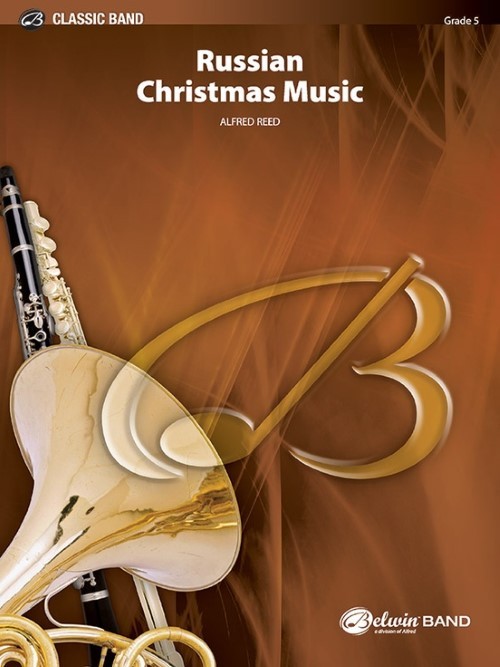 £82.95
£82.95Russian Christmas Music (Concert Band - Score and Parts) - Reed, Alfred
The theme carefully explored by Alfred Reed in this repertoire standard is "Carol of the Little Russian Children" which is an ancient Russian Christmas carol. You can hear four distinct sections originally called "Children's Carol," "Antiphonal Chant," "Village Song" and "Cathedral Chorus" all joined in this continuous contemporary setting. The almost overwhelming sound picture with varied tone colours and brilliant brass choir sounds is a classic in every sense. "Russian Christmas Music" by Alfred Reed is a worthy addition to the Belwin Classic Band series.
Estimated dispatch 7-14 working days
